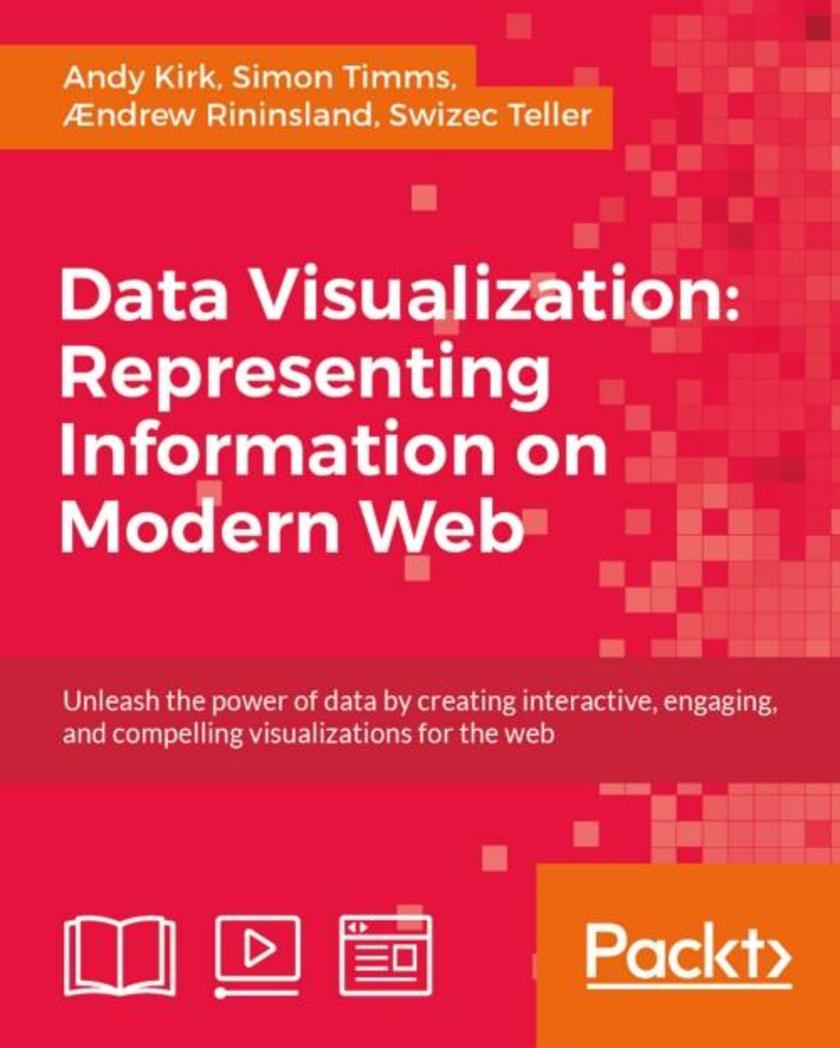
Data Visualization: Representing Information on Modern Web
¥179.84
Unleash the power of data by creating interactive, engaging, and compelling visualizations for the web About This Book Get a portable, versatile, and flexible data visualization design approach that will help you navigate the complex path towards success Get thorough explanation of the many visual variables and visualization taxonomy to provide you with a menu of creative options A comprehensive and contemporary introduction to data-driven visualization design and the most effective approaches to designing impact-maximizing and cognition-amplifying visualizations Who This Book Is For This course is for developers who are excited about data and who want to share that excitement with others and it will be handy for the web developers or data scientists who want to create interactive visualizations for the web. Prior knowledge of developing web applications is required. You should have a working knowledge of both JavaScript and HTML. What You Will Learn Harness the power of D3 by building interactive and real-time data-driven web visualizations Find out how to use JavaScript to create compelling visualizations of social data Identify the purpose of your visualization and your project's parameters to determine overriding design considerations across your project's execution Apply critical thinking to visualization design and get intimate with your dataset to identify its potential visual characteristics Explore the various features of HTML5 to design creative visualizations Discover what data is available on Stack Overflow, Facebook, Twitter, and Google+ Gain a solid understanding of the common D3 development idioms Find out how to write basic D3 code for server using Node.js In Detail Do you want to create more attractive chartsOr do you have huge data sets and need to unearth the key insights in a visual mannerData visualization is the representation and presentation of data, using proven design techniques to bring alive the patterns, stories, and key insights that are locked away. This learning path is divided into three modules. The first module will equip you with the key techniques required to overcome contemporary data visualization challenges. In the second module, Social Data Visualization with HTML5 and JavaScript, it teaches you how to leverage HTML5 techniques through JavaScript to build visualizations. In third module, Learning d3.js Data Visualization, will lead you to D3, which has emerged as one of the leading platforms to develop beautiful, interactive visualizations over the web. By the end of this course, you will have unlocked the mystery behind successful data visualizations. This Learning Path combines some of the best that Packt has to offer in one complete, curated package. It includes content from the following Packt products: ● Data Visualization: a successful design process by Andy Kirk ● Social Data Visualization with HTML5 and JavaScript by Simon Timms ● Learning d3.js Data Visualization, Second Edition by ?ndrew Rininsland and Swizec Teller Style and approach This course includes all the resources that will help you jump into creating interactive and engaging visualizations for the web. Through this comprehensive course, you’ll learn how to create engaging visualizations for the web to represent your data from start to finish!
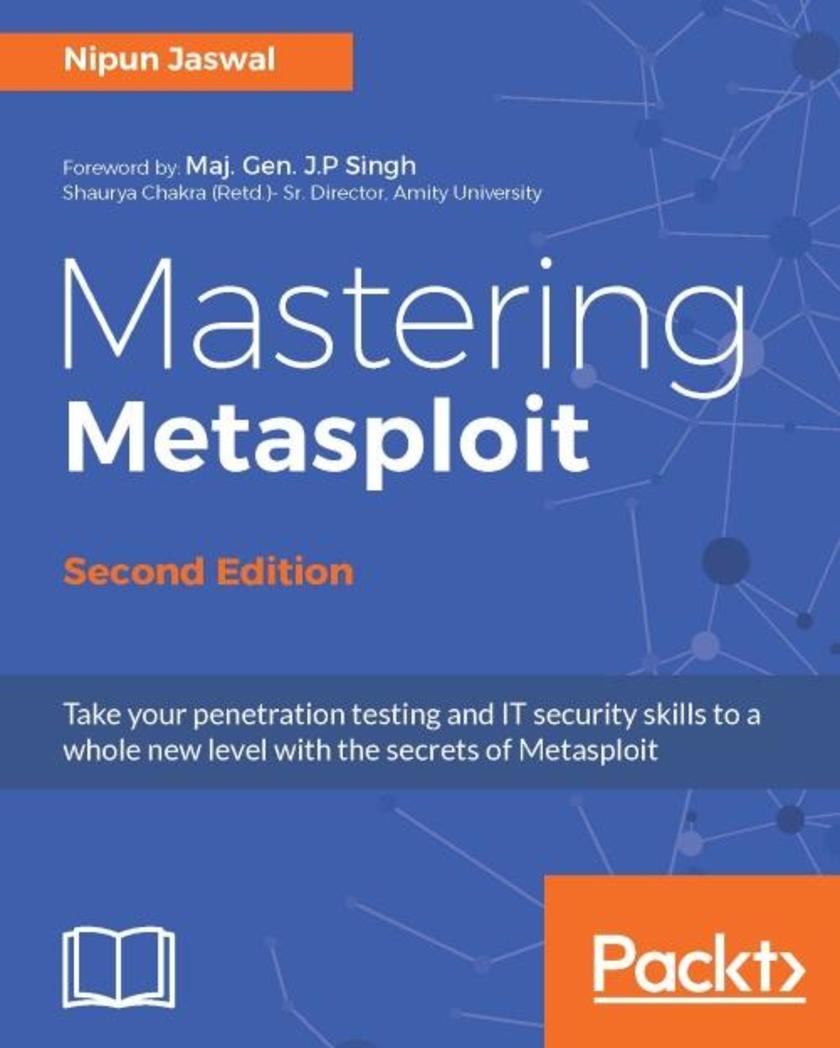
Mastering Metasploit - Second Edition
¥90.46
Take your penetration testing and IT security skills to a whole new level with the secrets of Metasploit About This Book Gain the skills to carry out penetration testing in complex and highly-secured environments Become a master using the Metasploit framework, develop exploits, and generate modules for a variety of real-world scenarios Get this completely updated edition with new useful methods and techniques to make your network robust and resilient Who This Book Is For This book is a hands-on guide to penetration testing using Metasploit and covers its complete development. It shows a number of techniques and methodologies that will help you master the Metasploit framework and explore approaches to carrying out advanced penetration testing in highly secured environments. What You Will Learn Develop advanced and sophisticated auxiliary modules Port exploits from PERL, Python, and many more programming languages Test services such as databases, SCADA, and many more Attack the client side with highly advanced techniques Test mobile and tablet devices with Metasploit Perform social engineering with Metasploit Simulate attacks on web servers and systems with Armitage GUI Script attacks in Armitage using CORTANA *ing In Detail Metasploit is a popular penetration testing framework that has one of the largest exploit databases around. This book will show you exactly how to prepare yourself against the attacks you will face every day by simulating real-world possibilities. We start by reminding you about the basic functionalities of Metasploit and its use in the most traditional ways. You’ll get to know about the basics of programming Metasploit modules as a refresher, and then dive into carrying out exploitation as well building and porting exploits of various kinds in Metasploit. In the next section, you’ll develop the ability to perform testing on various services such as SCADA, databases, IoT, mobile, tablets, and many more services. After this training, we jump into real-world sophisticated scenarios where performing penetration tests are a challenge. With real-life case studies, we take you on a journey through client-side attacks using Metasploit and various *s built on the Metasploit framework. By the end of the book, you will be trained specifically on time-saving techniques using Metasploit. Style and approach This is a step-by-step guide that provides great Metasploit framework methodologies. All the key concepts are explained details with the help of examples and demonstrations that will help you understand everything you need to know about Metasploit.
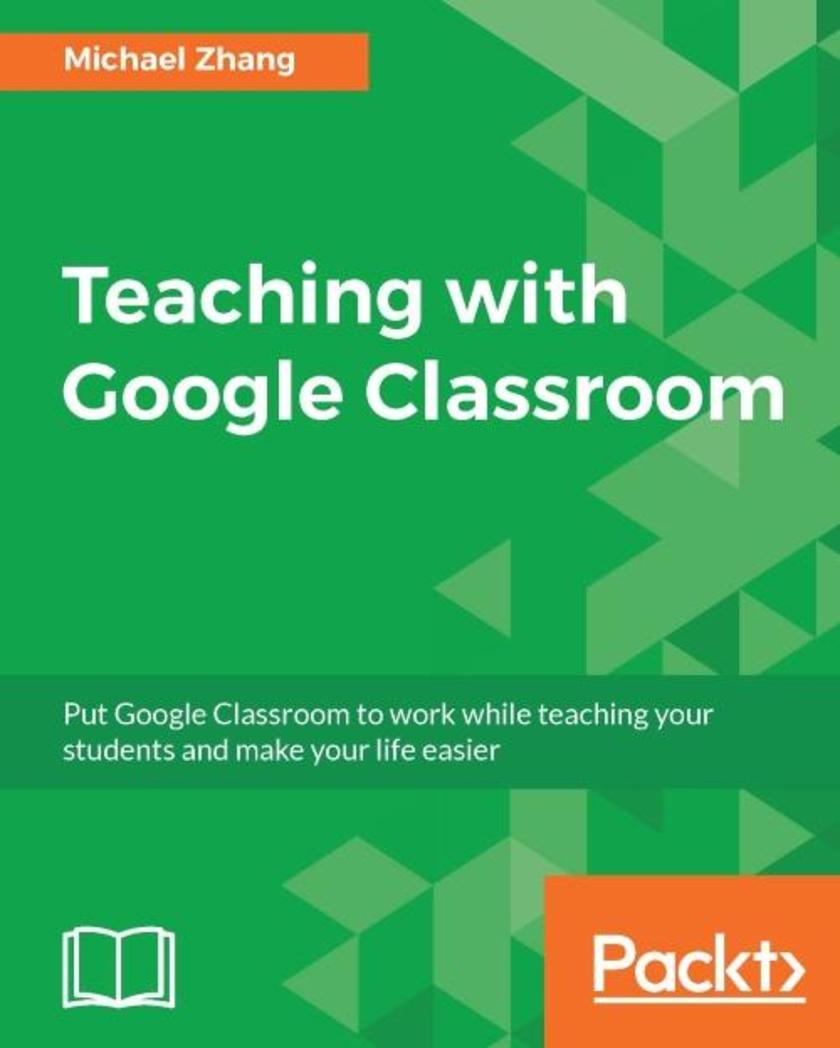
Teaching with Google Classroom
¥80.65
Put Google Classroom to work while teaching your students and make your life easier About This Book This is the first book to guide educators step by step through teaching with Google Classroom It’s focused on you, your students, and providing great learning experiences easily It’s easy to follow, with everything you need to get started and keep going even if you’re not a technology fan Who This Book Is For This is a book for educators who want to use Google Classroom to teach better. It’s not for geeks. There are rich examples, clear instructions, and enlightening explanations to help you put this platform to work. What You Will Learn Create a Google Classroom and add customized information for each individual class Add students to a Google Classroom Send announcements and questions to students Create, distribute, collect, and grade assignments through Google Classroom Add events to and share a Google Classroom’s calendar with parents to track a student's progress Reuse posts, archive classrooms, and perform other administrative tasks in Google Classroom Use Google Docs Add-ons, and Google Chrome Webstore Apps and Extensions to enhance assignments Set up Google Classroom’s mobile app In Detail Google Classroom helps teachers bring their work online. According to Google Trends, it’s already bigger than Moodle after barely a year in the wild. This book is a complete start-to-finish guide for teachers using Google Classroom for the first time. It explains what Google Classroom is, what it can do, how to set it up, and how to use it to enhance student learning while making your life as a teacher easier. It shows you how to place resources and activities online, gather assignments, and develop group and individual activities. It’s not just a manual, you’ll also discover inspiring, easy ways to put Google Classroom to work for you and your class. Style and approach This is a step-by-step guide to using Google Classroom, the rapidly emerging platform for education, effectively.
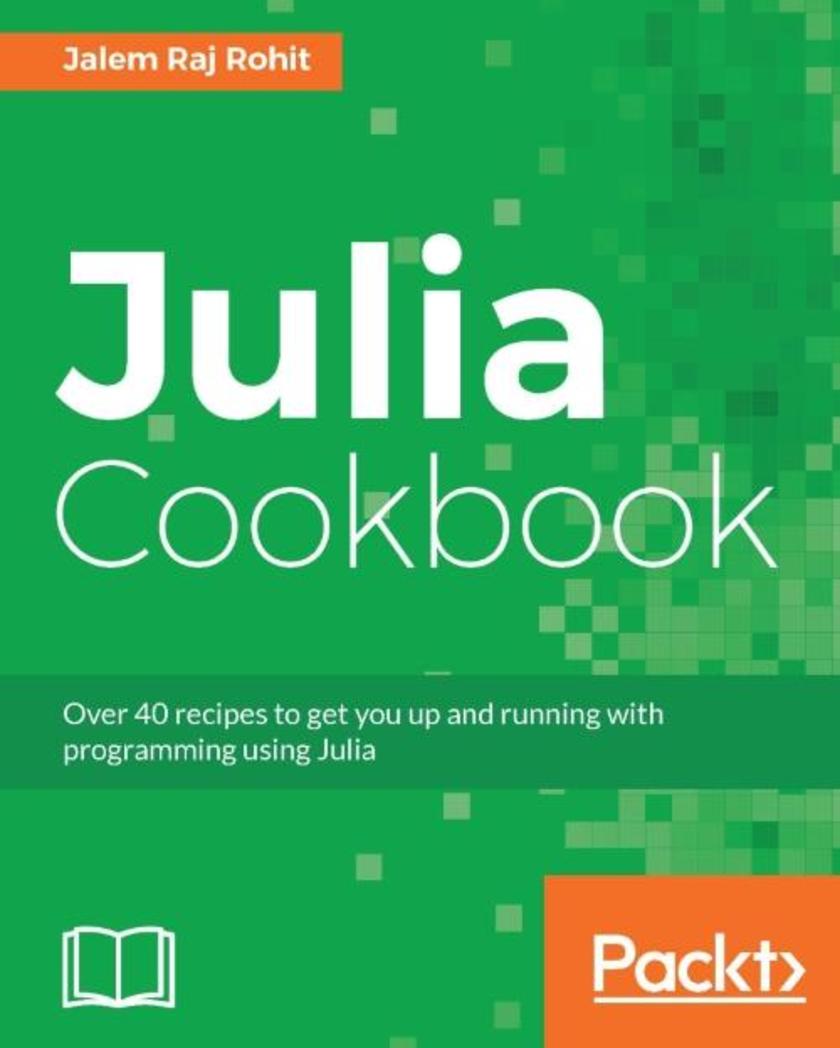
Julia Cookbook
¥71.93
Over 40 recipes to get you up and running with programming using Julia About This Book Follow a practical approach to learn Julia programming the easy way Get an extensive coverage of Julia’s packages for statistical analysis This recipe-based approach will help you get familiar with the key concepts in Juli Who This Book Is For This book is for data scientists and data analysts who are familiar with the basics of the Julia language. Prior experience of working with high-level languages such as MATLAB, Python, R, or Ruby is expected. What You Will Learn Extract and handle your data with Julia Uncover the concepts of metaprogramming in Julia Conduct statistical analysis with StatsBase.jl and Distributions.jl Build your data science models Find out how to visualize your data with Gadfly Explore big data concepts in Julia In Detail Want to handle everything that Julia can throw at you and get the most of it every dayThis practical guide to programming with Julia for performing numerical computation will make you more productive and able work with data more efficiently. The book starts with the main features of Julia to help you quickly refresh your knowledge of functions, modules, and arrays. We’ll also show you how to utilize the Julia language to identify, retrieve, and transform data sets so you can perform data analysis and data manipulation. Later on, you’ll see how to optimize data science programs with parallel computing and memory allocation. You’ll get familiar with the concepts of package development and networking to solve numerical problems using the Julia platform. This book includes recipes on identifying and classifying data science problems, data modelling, data analysis, data manipulation, meta-programming, multidimensional arrays, and parallel computing. By the end of the book, you will acquire the skills to work more effectively with your data. Style and approach This book has a recipe-based approach to help you grasp the concepts of Julia programming.
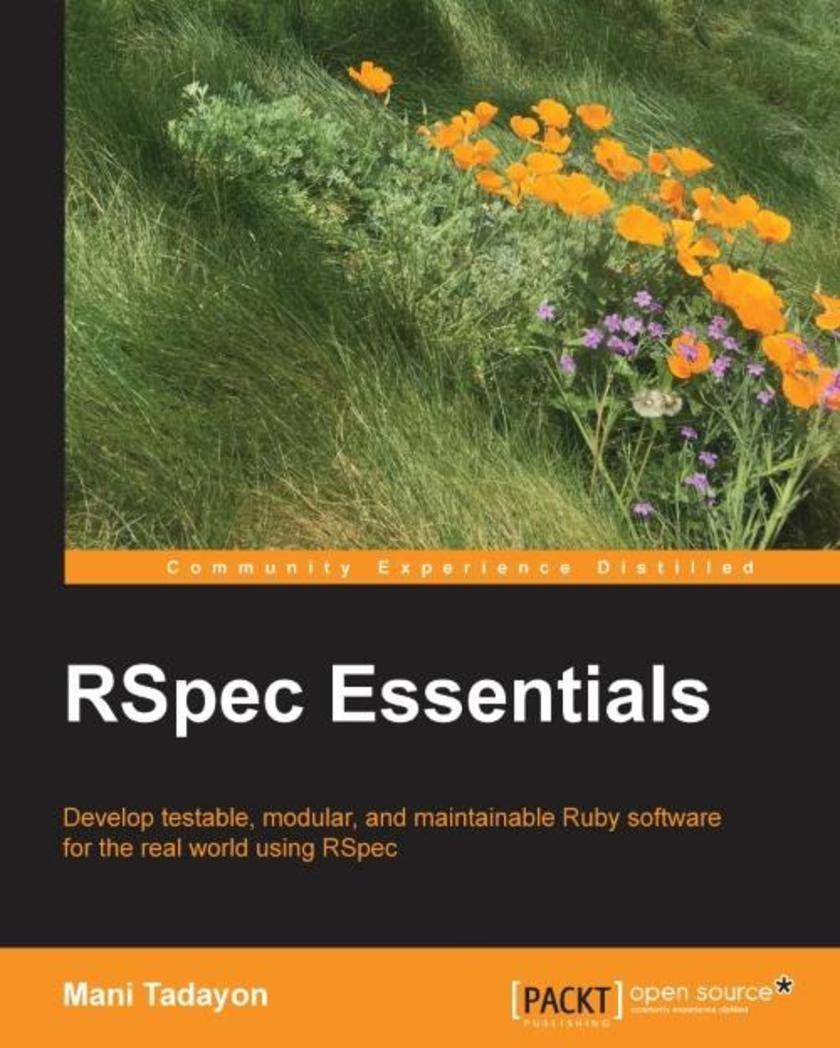
RSpec Essentials
¥71.93
Develop testable, modular, and maintainable Ruby software for the real world using RSpec About This Book Explore the concept of testability and how to implement tests that deliver the most value Maximize the quality of your Ruby code through a wide variety of tests Master the real-world tradeoffs of testing through detailed examples supported by in-depth discussion Who This Book Is For This book is aimed at the software engineer who wants to make their code more reliable and their development process easier. It is also aimed at test engineers who need to automate the testing of complex systems. Knowledge of Ruby is helpful, but even someone new to the language should find it easy to follow the code and tests. What You Will Learn Identify a unit of software for the purposes of testing Manage test states with hooks, fixtures, and mocks Handle external web services in tests using various techniques Configure RSpec flexibly and cleanly using support code and environment variables Interact with rich web apps in tests using Capybara Build the right feature with behavior-driven development Customize matchers and failure messages Verify correct development and production environments In Detail This book will teach you how to use RSpec to write high-value tests for real-world code. We start with the key concepts of the unit and testability, followed by hands-on exploration of key features. From the beginning, we learn how to integrate tests into the overall development process to help create high-quality code, avoiding the dangers of testing for its own sake. We build up sample applications and their corresponding tests step by step, from simple beginnings to more sophisticated versions that include databases and external web services. We devote three chapters to web applications with rich JavaScript user interfaces, building one from the ground up using behavior-driven development (BDD) and test-driven development (TDD). The code examples are detailed enough to be realistic while simple enough to be easily understood. Testing concepts, development methodologies, and engineering tradeoffs are discussed in detail as they arise. This approach is designed to foster the reader’s ability to make well-informed decisions on their own. Style and approach This comprehensive tutorial is packed with real-world examples of testing with RSpec. The most important features of RSpec are introduced in the early chapters and are used in examples of growing complexity in the following chapters. Concepts and methodologies are discussed in detail.
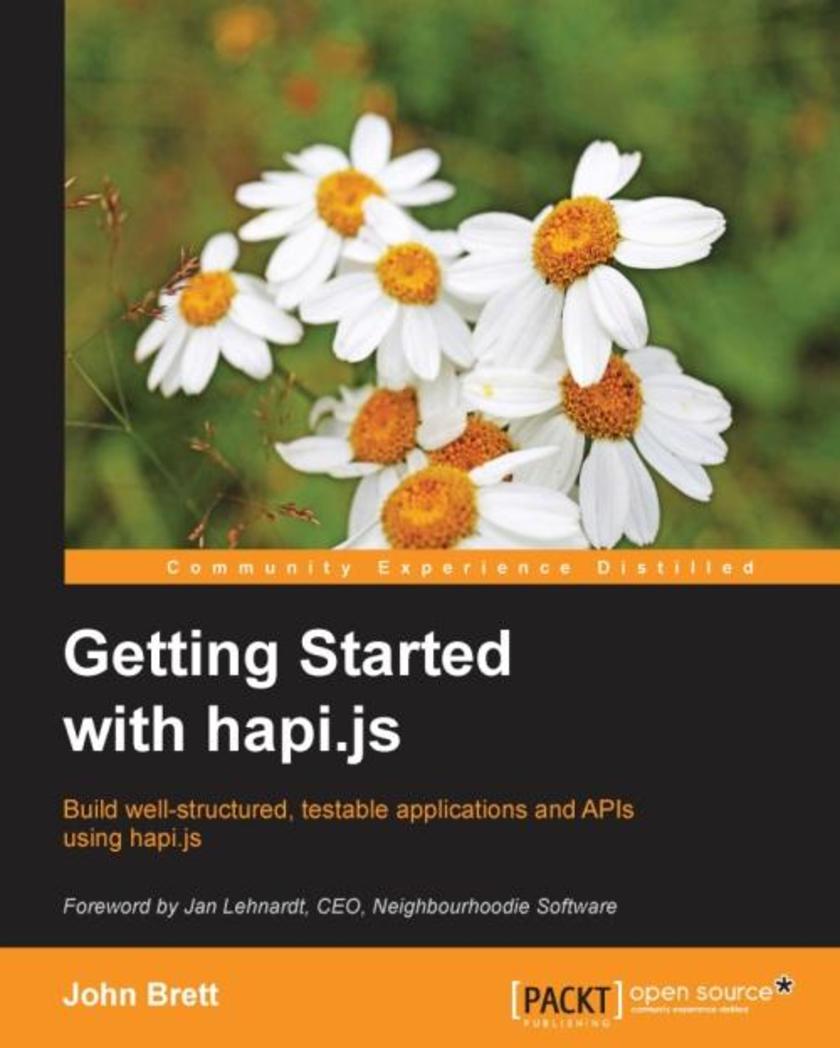
Getting Started with hapi.js
¥54.49
Build well-structured, testable applications and APIs using hapi.js About This Book With the help of this book, you will improve your productivity as a developer and that of your team by focusing on business logic utilizing the structure that Hapi.js provides You will be introduced to a real-world problem and we’ll demonstrate how to use the tools Hapi provides to resolve it This is the only book with a learn-by-example approach Who This Book Is For If you are a JavaScript developer with or without Node.js experience and would like to learn to build applications, APIs, and web servers with the best-in-class framework hapi.js, this book is perfect for you. What You Will Learn Increase your productivity by taking advantage of the out-of-the-box features hapi.js provides Build secure API servers Create websites and applications using your favorite templating language Leverage hapi.js plugins to better structure your codebase Simplify your security workflows with the built-in authentication and authorization functionality of hapi.js Ensure application reliability with testing and code coverage Reduce code complexity using reusable validation logic with joi Gather insight into your application performance via logging Start the journey to building robust production-ready applications In Detail This book will introduce hapi.js and walk you through the creation of your first working application using the out-of-the-box features hapi.js provides. Packed with real-world problems and examples, this book introduces some of the basic concepts of hapi.js and Node.js and takes you through the typical journey you'll face when developing an application. Starting with easier concepts such as routing requests, building APIs serving JSON, using templates to build websites and applications, and connecting databases, we then move on to more complex problems such as authentication, model validation, caching, and techniques for structuring your codebase to scale gracefully. You will also develop skills to ensure your application's reliability through testing, code coverage, and logging. By the end of this book, you'll be equipped with all the skills you need to build your first fully featured application. This book will be invaluable if you are investigating Node.js frameworks or planning on using hapi.js in your next project. Style and approach This book takes a step-by-step approach to building an application or web server using hapi.js though examples.
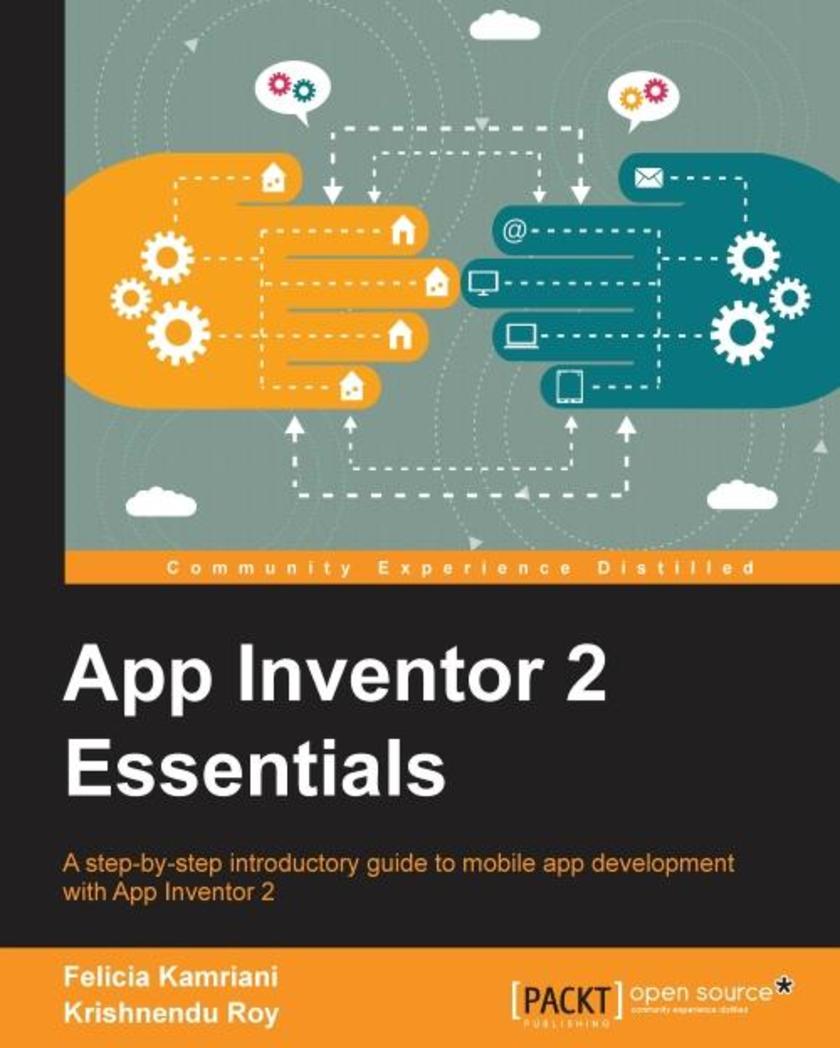
App Inventor 2 Essentials
¥54.49
A step-by-step introductory guide to mobile app development with App Inventor 2 About This Book Get an introduction to the functionalities of App Inventor 2 and use it to unleash your creativity Learn to navigate the App Inventor platform, develop basic coding skills and become familiar with a blocks based programming language Build your very first mobile app and feel proud of your accomplishment Follow tutorials to expand your app development skills Who This Book Is For App Inventor 2 Essentials is for anyone who wants to learn to make mobile apps for Android devices – no prior coding experience is necessary. What You Will Learn Perform technical setup and navigate the App Inventor platform Utilize the interactive development environment by pairing a mobile device with a computer using Wi-Fi or USB Build three apps: a game, an event app and a raffle app Create the user interface of the app in the Designer and program the code in the Blocks Editor Integrate basic computer science principles along with more complex elements such fusion tables and lists Test and troubleshoot your applications Publish your apps on Google Play Store to reach a wide audience Unleash your creativity for further app development In Detail App Inventor 2 will take you on a journey of mobile app development. We begin by introducing you to the functionalities of App Inventor and giving you an idea about the types of apps you can develop using it. We walk you through the technical set up so you can take advantage of the interactive development environment (live testing). You will get hands-on, practical experience building three different apps using tutorials. Along the way, you will learn computer science principles as well as tips to help you prepare for the creative process of building an app from scratch. By the end of the journey, you will learn how to package an app and deploy it to app markets. App Inventor 2 Essentials prepares you to amass a resource of skills, knowledge and experience to become a mobile app developer Style and approach Every topic in this book is explained in step-by-step and easy-to-follow fashion, accompanied with screenshots of the interface that will make it easier for you to understand the processes.

Mastering Git
¥90.46
Attain expert-level proficiency with Git for enhanced productivity and efficient collaboration by mastering advanced distributed version control features About This Book Set up Git for solo and collaborative development Harness the full power of Git version control system to customize Git behavior, manipulate history, integrate external tools and explore platform shortcuts A detailed guide, which explains how to apply advanced Git techniques and workflows and ways to handle submodules Who This Book Is For If you are a Git user with reasonable knowledge of Git and familiarity with basic concepts such as branching, merging, staging, and workflows, this is the book for you. Basic knowledge of installing Git and software configuration management concepts is essential. What You Will Learn Explore project history, find revisions using different criteria, and filter and format how history looks Manage your working directory and staging area for commits and interactively create new revisions and amend them Set up repositories and branches for collaboration Submit your own contributions and integrate contributions from other developers via merging or rebasing Customize Git behavior system-wide, on a per-user, per-repository, and per-file basis Take up the administration and set up of Git repositories, configure access, find and recover from repository errors, and perform repository maintenance Chose a workflow and configure and set up support for the chosen workflow In Detail Git is one of the most popular types of Source Code Management (SCM) and Distributed Version Control System (DVCS). Despite the powerful and versatile nature of the tool enveloping strong support for nonlinear development and the ability to handle large projects efficiently, it is a complex tool and often regarded as “user-unfriendly”. Getting to know the ideas and concepts behind the architecture of Git will help you make full use of its power and understand its behavior. Learning the best practices and recommended workflows should help you to avoid problems and ensure trouble-free development. The book scope is meticulously designed to help you gain deeper insights into Git's architecture, its underlying concepts, behavior, and best practices. Mastering Git starts with a quick implementation example of using Git for a collaborative development of a sample project to establish the foundation knowledge of Git operational tasks and concepts. Furthermore, as you progress through the book, the tutorials provide detailed de*ions of various areas of usage: from archaeology, through managing your own work, to working with other developers. This book also helps augment your understanding to examine and explore project history, create and manage your contributions, set up repositories and branches for collaboration in centralized and distributed version control, integrate work from other developers, customize and extend Git, and recover from repository errors. By exploring advanced Git practices, you will attain a deeper understanding of Git’s behavior, allowing you to customize and extend existing recipes and write your own. Style and approach Step-by-step instructions and useful information make this book the ultimate guide to understanding and mastering Git. This book will show road to mastery example by example, while explaining mental model of Git. The Introduction section covers the 'Essentials' just for refreshing the basics. The main highlight is that the concepts are based on HOW the technology/framework works and not just practical 'WHAT to do'.
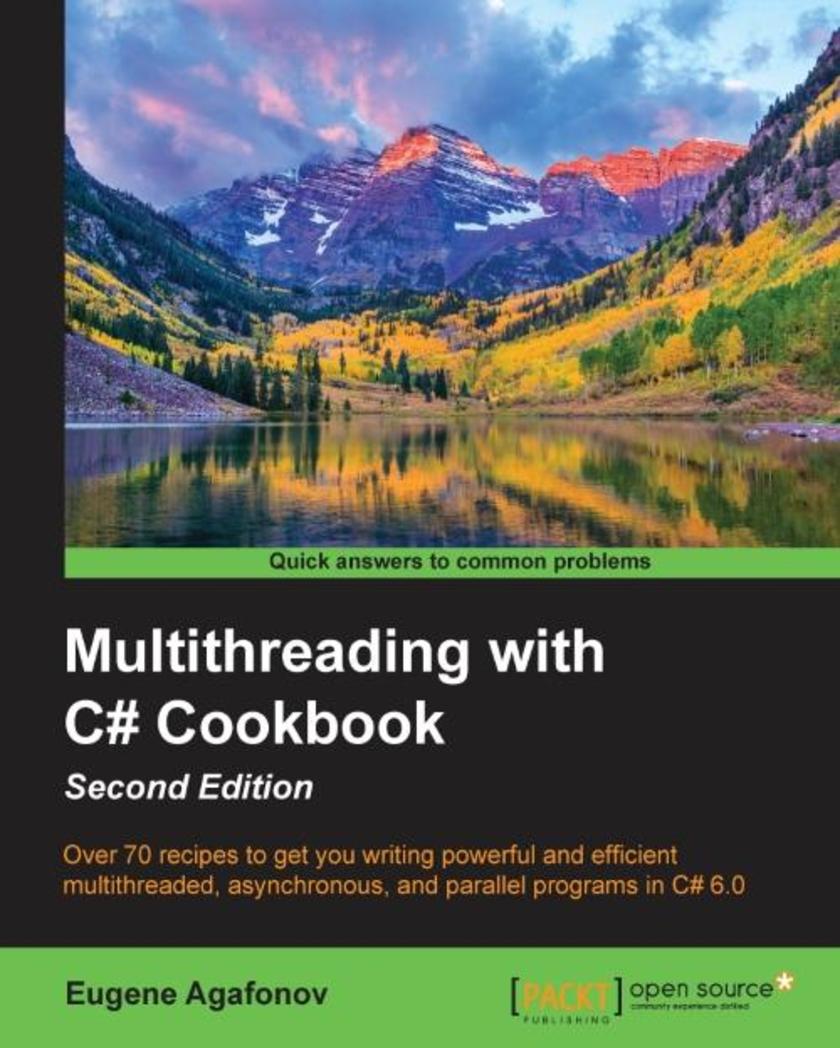
Multithreading with C# Cookbook - Second Edition
¥90.46
Over 70 recipes to get you writing powerful and efficient multithreaded, asynchronous, and parallel programs in C# 6.0 About This Book Rewritten and updated to take advantage of the latest C# 6 features Learn about multithreaded, asynchronous, and parallel programming through hands-on, code-first examples Use these recipes to build fast, scalable, and reliable applications in C# Who This Book Is For This book is aimed at those who are new to multithreaded programming, and who are looking for a quick and easy way to get started. It is assumed that you have some experience in C# and .NET already, and you should also be familiar with basic computer science terminology and basic algorithms and data structures. What You Will Learn Use C# 6.0 asynchronous language features Work with raw threads, synchronize threads, and coordinate their work Develop your own asynchronous API with Task Parallel Library Work effectively with a thread pool Scale up your server application with I/O threads Parallelize your LINQ queries with PLINQ Use common concurrent collections Apply different parallel programming patterns Use Reactive Extensions to run asynchronous operations and manage their options In Detail Multi-core processors are synonymous with computing speed and power in today’s world, which is why multithreading has become a key concern for C# developers. Multithreaded code helps you create effective, scalable, and responsive applications. This is an easy-to-follow guide that will show you difficult programming problems in context. You will learn how to solve them with practical, hands-on, recipes. With these recipes, you’ll be able to start creating your own scalable and reliable multithreaded applications. Starting from learning what a thread is, we guide you through the basics and then move on to more advanced concepts such as task parallel libraries, C# asynchronous functions, and much more. Rewritten to the latest C# specification, C# 6, and updated with new and modern recipes to help you make the most of the hardware you have available, this book will help you push the boundaries of what you thought possible in C#. Style and approach This is an easy-to-follow guide full of hands-on examples of real-world multithreading tasks. Each topic is explained and placed in context, and for the more inquisitive, there are also more in-depth details of the concepts used.
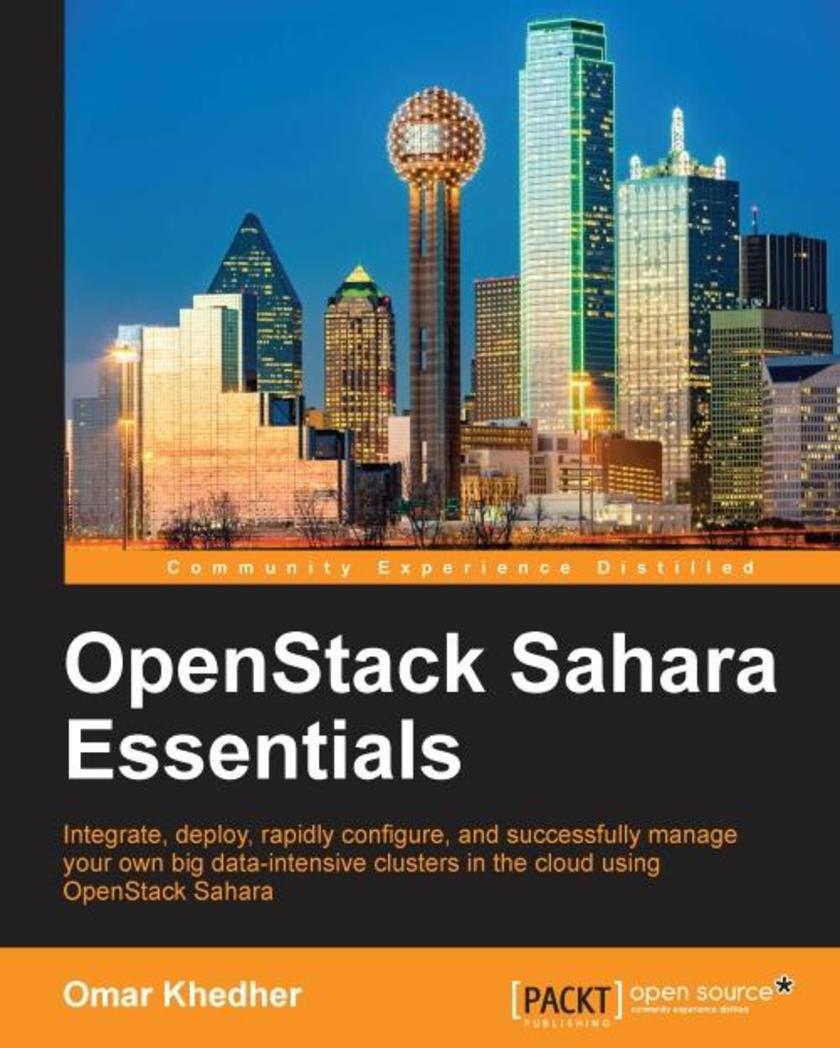
OpenStack Sahara Essentials
¥71.93
Integrate, deploy, rapidly configure, and successfully manage your own big data-intensive clusters in the cloud using OpenStack Sahara About This Book A fast paced guide to help you utilize the benefits of Sahara in OpenStack to meet the Big Data world of Hadoop. A step by step approach to simplify the complexity of Hadoop configuration, deployment and maintenance. Who This Book Is For This book targets data scientists, cloud developers and Devops Engineers who would like to become proficient with OpenStack Sahara. Ideally, this book is well suitable for readers who are familiars with databases, Hadoop and Spark solutions. Additionally, a basic prior knowledge of OpenStack is expected. The readers should also be familiar with different Linux boxes, distributions and virtualization technology. What You Will Learn Integrate and Install Sahara with OpenStack environment Learn Sahara architecture under the hood Rapidly configure and scale Hadoop clusters on top of OpenStack Explore the Sahara REST API to create, deploy and manage a Hadoop cluster Learn the Elastic Processing Data (EDP) facility to execute jobs in clusters from Sahara Cover other Hadoop stable plugins existing supported by Sahara Discover different features provided by Sahara for Hadoop provisioning and deployment Learn how to troubleshoot OpenStack Sahara issues In Detail The Sahara project is a module that aims to simplify the building of data processing capabilities on OpenStack. The goal of this book is to provide a focused, fast paced guide to installing, configuring, and getting started with integrating Hadoop with OpenStack, using Sahara. The book should explain to users how to deploy their data-intensive Hadoop and Spark clusters on top of OpenStack. It will also cover how to use the Sahara REST API, how to develop applications for Elastic Data Processing on Openstack, and setting up hadoop or spark clusters on Openstack. Style and approach This book takes a step by step approach teaching how to integrate, deploy and manage data using OpenStack Sahara. It will teach how the OpenStack Sahara is beneficial by simplifying the complexity of Hadoop configuration, deployment and maintenance.

Salesforce Platform App Builder Certification Handbook
¥80.65
A handy guide that covers the most essential topics for Salesforce Platform App Builder Certification in an easy-to-understand format About This Book Get to grips with the fundamentals of Force.com to pass the certification exam with flying colors Create Force.com applications, automate business processes, and manage data operations to be a successful Salesforce.com Certified Force.com app builder A step-by-step guide that covers the most essential topics for the Platform App Builder Certification in an easy-to-understand format Who This Book Is For Salesforce beginners who need to prepare for the Salesforce Platform App Builder Certification exam will benefit from this book. This book is ideal for developers and admins who are new to Salesforce CRM and the Force.com platform. It is recommended that users have some basic programming knowledge and are familiar with salesforce. By the end of the book, you will be ready to appear for the exam and develop various applications on the cloud platform. What You Will Learn Learn the basics of the force.com cloud platform Learn to build objects that align with your business Understand the process of building an application on force.com platform Kick-start your certification journey in basic- easy-to-follow guide Focus on important topics that help you accomplish your certification goals Learn to secure your application with the Salesforce security model Manipulate and process large amount of data using the data tools Prepare for the exam with sample mock questions In Detail The Salesforce Certified Platform App Builder exam is for individuals who want to demonstrate their skills and knowledge in designing, building, and implementing custom applications using the declarative customization capabilities of Force.com. This book will build a strong foundation in Force.com to prepare you for the platform app builder certification exam. It will guide you through designing the interface while introducing the Lightning Process Builder. Next, we will implement business logic using various point and click features of Force.com. We will learn to manage data and create reports and dashboards. We will then learn to administer the force.com application by configuring the object-level, field-level, and record-level security. By the end of this book, you will be completely equipped to take the Platform App Builder certification exam. Style and approach Simple and to-the-point examples that can be tried out in your developer org. A practical book for professionals who want to take the Salesforce Platform App Builder Certification exam. Sample questions for every topic in an exam pattern to help you prepare better, and tips to get things started. Full of screen-shots, diagrams, and clear step-by-step instructions that cover the entire syllabus for the exam.
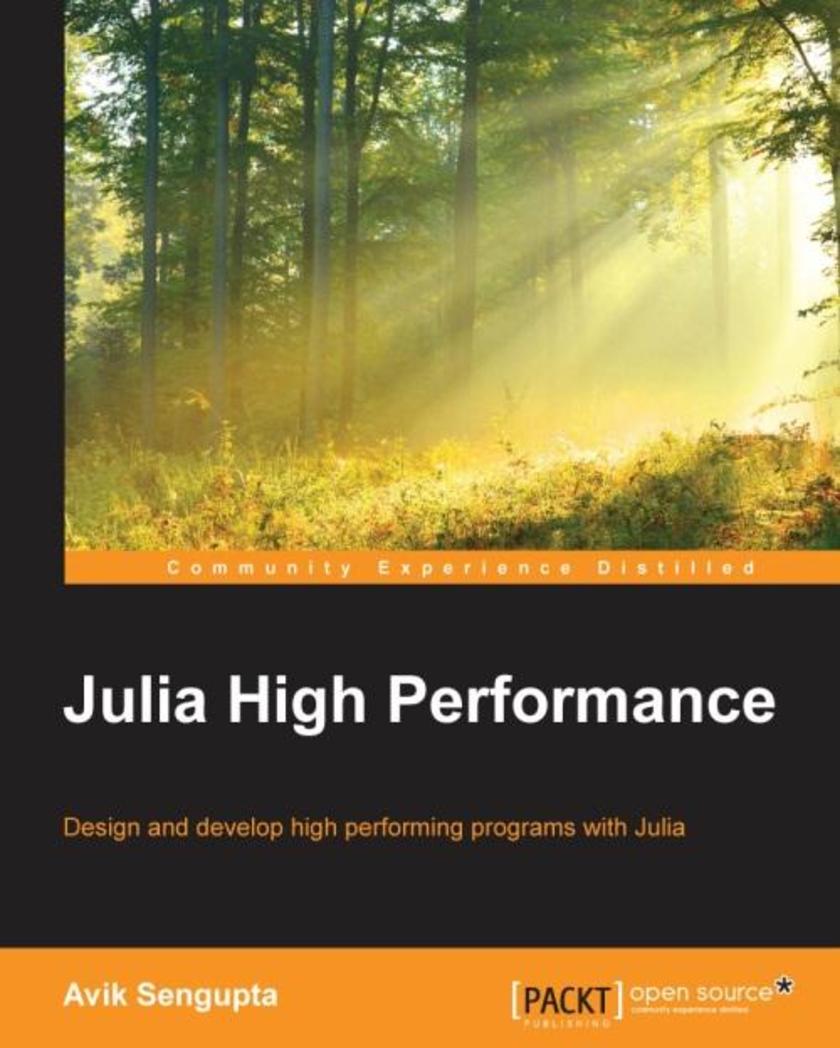
Julia High Performance
¥63.21
Design and develop high performing programs with Julia About This Book Learn to code high reliability and high performance programs Stand out from the crowd by developing code that runs faster than your peers’ codes This book is intended for developers who are interested in high performance technical programming. Who This Book Is For This book is for beginner and intermediate Julia programmers who are interested in high performance technical computing. You will have a basic familiarity with Julia syntax, and have written some small programs in the language. What You Will Learn Discover the secrets behind Julia’s speed Get a sense of the possibilities and limitations of Julia’s performance Analyze the performance of Julia programs Measure the time and memory taken by Julia programs Create fast machine code using Julia’s type information Define and call functions without compromising Julia’s performance Understand number types in Julia Use Julia arrays to write high performance code Get an overview of Julia’s distributed computing capabilities In Detail Julia is a high performance, high-level dynamic language designed to address the requirements of high-level numerical and scientific computing. Julia brings solutions to the complexities faced by developers while developing elegant and high performing code. Julia High Performance will take you on a journey to understand the performance characteristics of your Julia programs, and enables you to utilize the promise of near C levels of performance in Julia. You will learn to analyze and measure the performance of Julia code, understand how to avoid bottlenecks, and design your program for the highest possible performance. In this book, you will also see how Julia uses type information to achieve its performance goals, and how to use multuple dispatch to help the compiler to emit high performance machine code. Numbers and their arrays are obviously the key structures in scientific computing – you will see how Julia’s design makes them fast. The last chapter will give you a taste of Julia’s distributed computing capabilities. Style and approach This is a hands-on manual that will give you good explanations about the important concepts related to Julia programming.
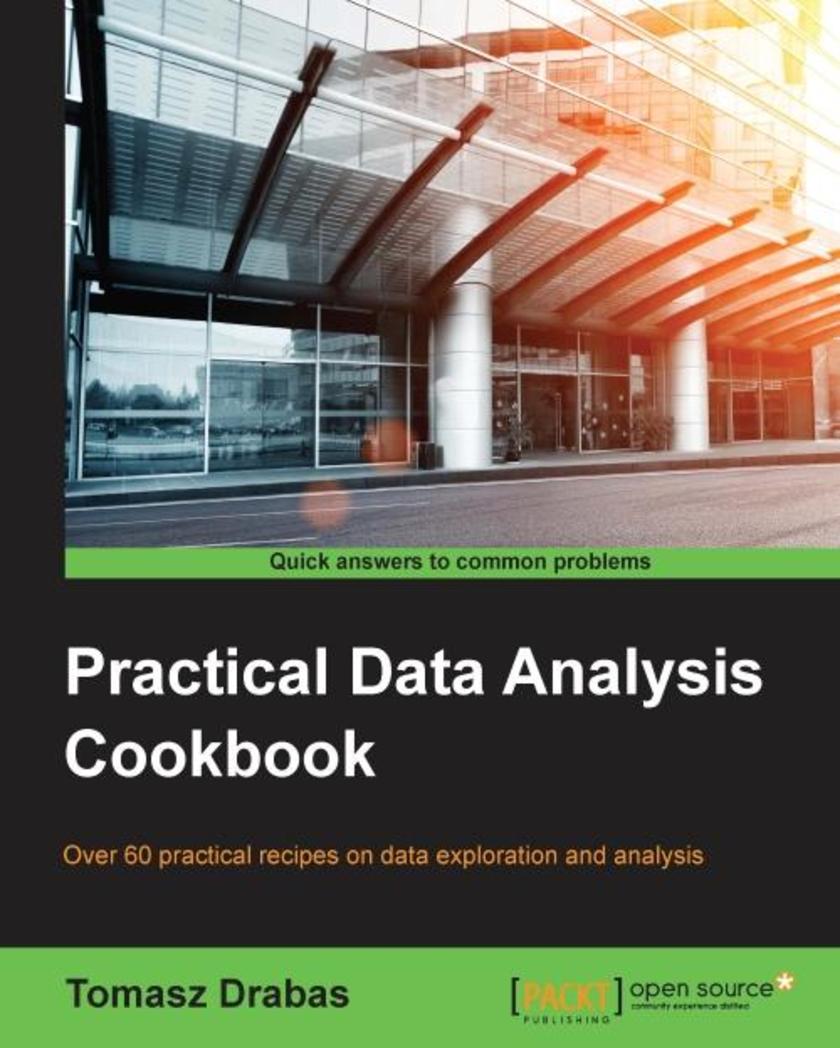
Practical Data Analysis Cookbook
¥90.46
Over 60 practical recipes on data exploration and analysis About This Book Clean dirty data, extract accurate information, and explore the relationships between variables Forecast the output of an electric plant and the water flow of American rivers using pandas, NumPy, Statsmodels, and scikit-learn Find and extract the most important features from your dataset using the most efficient Python libraries Who This Book Is For If you are a beginner or intermediate-level professional who is looking to solve your day-to-day, analytical problems with Python, this book is for you. Even with no prior programming and data analytics experience, you will be able to finish each recipe and learn while doing so. What You Will Learn Read, clean, transform, and store your data usng Pandas and OpenRefine Understand your data and explore the relationships between variables using Pandas and D3.js Explore a variety of techniques to classify and cluster outbound marketing campaign calls data of a bank using Pandas, mlpy, NumPy, and Statsmodels Reduce the dimensionality of your dataset and extract the most important features with pandas, NumPy, and mlpy Predict the output of a power plant with regression models and forecast water flow of American rivers with time series methods using pandas, NumPy, Statsmodels, and scikit-learn Explore social interactions and identify fraudulent activities with graph theory concepts using NetworkX and Gephi Scrape Internet web pages using urlib and BeautifulSoup and get to know natural language processing techniques to classify movies ratings using NLTK Study simulation techniques in an example of a gas station with agent-based modeling In Detail Data analysis is the process of systematically applying statistical and logical techniques to describe and illustrate, condense and recap, and evaluate data. Its importance has been most visible in the sector of information and communication technologies. It is an employee asset in almost all economy sectors. This book provides a rich set of independent recipes that dive into the world of data analytics and modeling using a variety of approaches, tools, and algorithms. You will learn the basics of data handling and modeling, and will build your skills gradually toward more advanced topics such as simulations, raw text processing, social interactions analysis, and more. First, you will learn some easy-to-follow practical techniques on how to read, write, clean, reformat, explore, and understand your data—arguably the most time-consuming (and the most important) tasks for any data scientist. In the second section, different independent recipes delve into intermediate topics such as classification, clustering, predicting, and more. With the help of these easy-to-follow recipes, you will also learn techniques that can easily be expanded to solve other real-life problems such as building recommendation engines or predictive models. In the third section, you will explore more advanced topics: from the field of graph theory through natural language processing, discrete choice modeling to simulations. You will also get to expand your knowledge on identifying fraud origin with the help of a graph, scrape Internet websites, and classify movies based on their reviews. By the end of this book, you will be able to efficiently use the vast array of tools that the Python environment has to offer. Style and approach This hands-on recipe guide is divided into three sections that tackle and overcome real-world data modeling problems faced by data analysts/scientist in their everyday work. Each independent recipe is written in an easy-to-follow and step-by-step fashion.

Getting Started with React
¥63.21
A light but powerful way to build dynamic real-time applications using ReactJS About This Book Learn how to develop powerful JavaScript applications using ReactJS Integrate a React-based app with an external API (Facebook login) while using React components, with the Facebook developer app Implement the Reactive paradigm to build stateless and asynchronous apps with React Who This Book Is For This book is for any front-end web or mobile-app developer who wants to learn ReactJS. Knowledge of basic JavaScript will give you a good head start with the book. What You Will Learn Understand the ReactJS basics through an overview Install and create your first React component Refactor the ReactJS component using JSX Integrate your React application with the Facebook login and Graph API, then fetch data from your liked pages in Facebook and display them in a browser Handle UI elements events with React, respond to users input, and create stateful components Use some core lifecycle events for integration and find out about ES6 syntaxes in the React world Understand the FLUX architecture and create an application using FLUX with React Make a component more reusable with mixins and validation helpers and structure your components properly Explore techniques to test your ReactJS code Deploy your code using webpack and Gulp In Detail ReactJS, popularly known as the V (view) of the MVC architecture, was developed by the Facebook and Instagram developers. It follows a unidirectional data flow, virtual DOM, and DOM difference that are generously leveraged in order to increase the performance of the UI. Getting Started with React will help you implement the Reactive paradigm to build stateless and asynchronous apps with React. We will begin with an overview of ReactJS and its evolution over the years, followed by building a simple React component. We will then build the same react component with JSX syntax to demystify its usage. You will see how to configure the Facebook Graph API, get your likes list, and render it using React. Following this, we will break the UI into components and you’ll learn how to establish communication between them and respond to users input/events in order to have the UI reflect their state. You’ll also get to grips with the ES6 syntaxes. Moving ahead, we will delve into the FLUX and its architecture, which is used to build client-side web applications and complements React’s composable view components by utilizing a unidirectional data flow. Towards the end, you’ll find out how to make your components reusable, and test and deploy them into a production environment. Finally, we’ll briefly touch on other topics such as React on the server side, Redux and some advanced concepts. Style and approach The book follows a step-by-step, practical, tutorial approach with examples that explain the key concepts of ReactJS. Each topic is sequentially explained and contextually placed to give sufficient details of ReactJS.
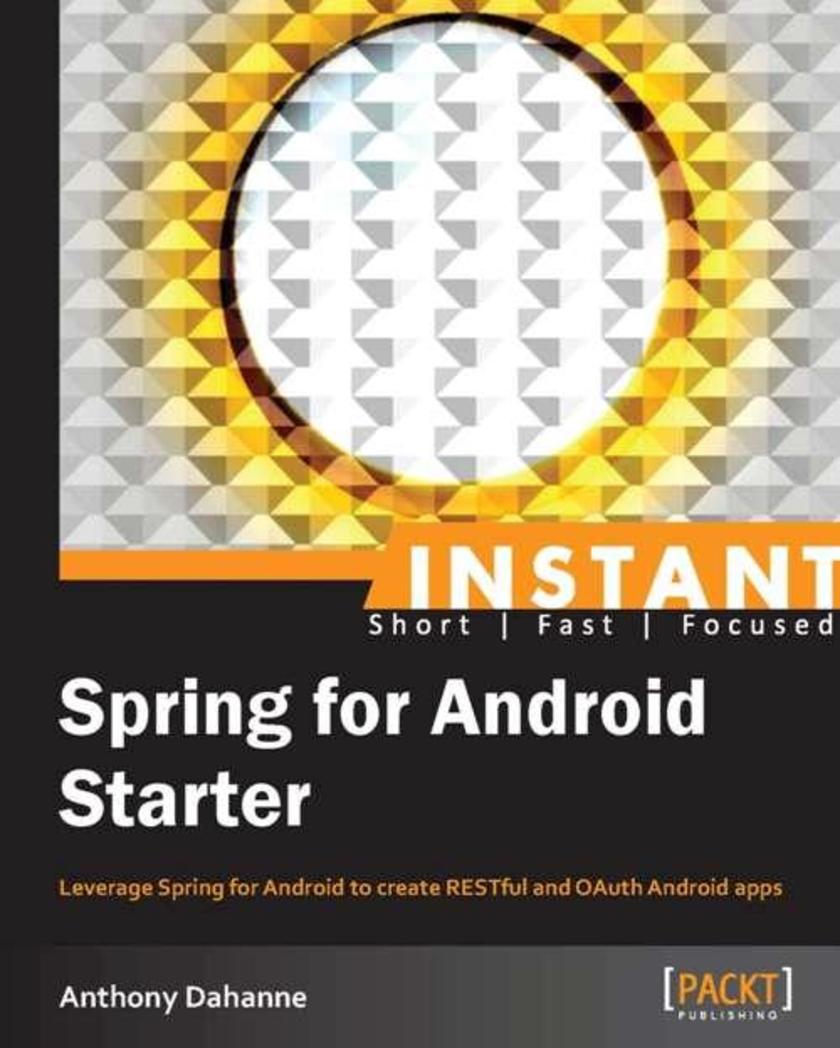
Instant Spring for Android Starter
¥45.77
Get to grips with a new technology, understand what it is and what it can do for you, and then get to work with the most important features and tasks. This is a Starter which gives you an introduction to Spring for Android with plenty of well-explained practical code examples. If you are an Android developer who wants to learn about RESTful web services and OAuth authentication and authorization, and you also want to know how to speed up your development involving those architectures using Spring for Android abstractions, then this book is for you. But core Java developers are not forgotten, thanks to the explanations on how to set up Eclipse and Maven for Android development (very basic knowledge regarding Android UI design is required to understand the examples; the right pointers to ramp up on this topic are provided though).

Instant RaphaelJS Starter
¥41.41
Get to grips with a new technology, understand what it is and what it can do for you, and then get to work with the most important features and tasks. Starter Guide This book is great for developers new to Vector graphics in browsers (SVG and VML), and who are looking to get a good grounding in how to use Raphael JS to create imageless and fast loading interactive drawings and shapes, in a web browser. It’s assumed that you will have some experience in HTML JavaScript or jQuery already.
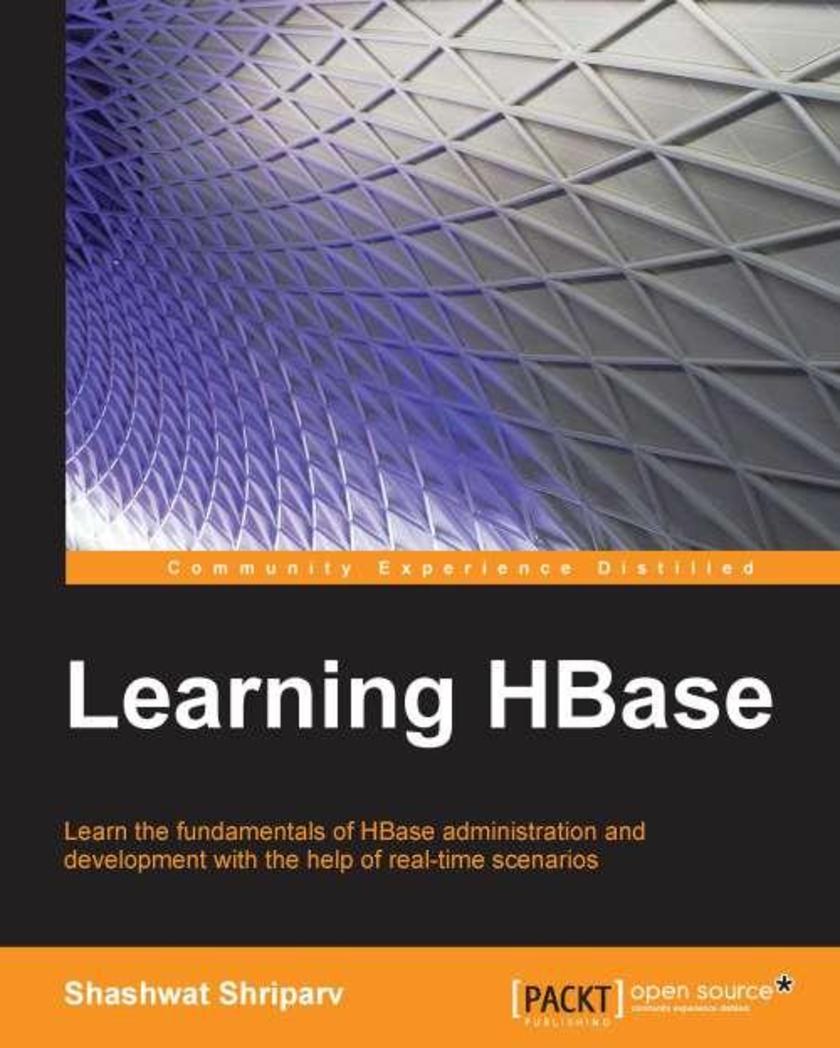
Learning HBase
¥80.65
If you are an administrator or developer who wants to enter the world of Big Data and BigTables and would like to learn about HBase, this is the book for you.

Building Web Applications with ArcGIS
¥45.77
If you are a GIS user or a web programmer, this book is for you. This book is also intended for all those who have basic web development knowledge with no prior experience of ArcGIS and are keen on venturing into the world of ArcGIS technology. The book will equip you with the skills to comfortably start your own ArcGIS web development project.

Manga Studio Ex 5 Cookbook
¥80.65
Over 90 hands-on recipes to help you create digital comics from page setup to exporting the final product About This Book Design creative and custom digital comics with the perfection equivalent of pen-and-paper drawings Explore the latest features from Manga Studio EX 5 such as custom brush effects, layers, masks, 3D objects, panels, and multiple-page story layout A pragmatic manual with engaging recipes and attractive screenshots that make comic creation fun and easy Who This Book Is For This book is intended for competent comic artists working on Manga Studio who want to create more attractive comics by using powerful tools and features from software for digital comic creation. What You Will Learn Create story files and custom pages for any Web or publishing project Customize brushes for special ink effects, hatching and cross-hatching, and much more Work with vector images in Manga Studio EX 5 Use the new Symmetry ruler and the new Line tools to create your illustrations faster and more efficiently Make and save custom screentones, and add them to your comic pages Punch up your illustrations with color palettes and special effects Add 3D models to create or accentuate your comic scenes Finish a project by exporting it for the Web or for a printed collection In Detail Manga Studio is a software application for the digital creation of comics and manga. Manga Studio EX 5 has all the features of Manga Studio 5, professional story creation tools, and other special features that make it the ultimate illustration tool for serious comic, manga, and graphic artists. Made specifically for comic artists and illustrators, it has some of the most powerful digital art creation tools available. From digital perspective rulers to a library of screentones, Manga Studio 5 works for the artist with an intuitive, customizable interface and tools. With Manga Studio EX 5, you can create custom page templates, save commonly used designs, make custom brushes, mimic traditional media, pose 3D objects directly on the art canvas, and export all of your comic pages for print or the Web. The book starts with everything you need to know to set up custom pages for your comic or Manga project. These recipes will take you all the way through to exporting your illustrations for print or to display them on the Web. You will learn how to create custom brushes that you will use for inking, or for repetitive tasks such as drawing foliage or rubble. Next, you will move on to understanding Layer Modes and Layer Masks. Then, you'll learn how to finish up your illustrations with color, screentones, special effects, and 3D objects. Finally, you will be taught to export your hard work and share it with the world, either through the Web or in print. This cookbook will give you just the right recipes to turn on the power of Manga Studio EX 5 and get you creating more illustrations faster and more efficiently. Style and approach An easy-to-follow, and informative book full of recipes that explore real-world topics for the comic creator. Each recipe is explained with detailed steps and interesting screenshots.
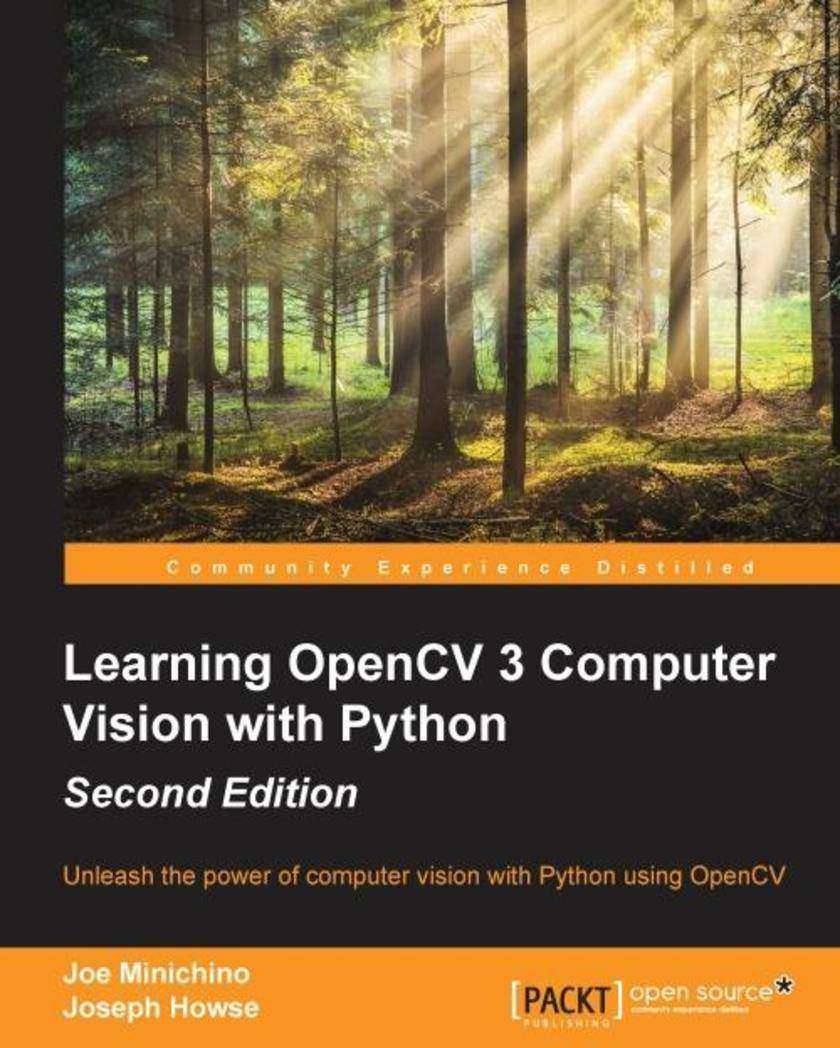
Learning OpenCV 3 Computer Vision with Python - Second Edition
¥80.65
Unleash the power of computer vision with Python using OpenCV About This Book Create impressive applications with OpenCV and Python Familiarize yourself with advanced machine learning concepts Harness the power of computer vision with this easy-to-follow guide Who This Book Is For Intended for novices to the world of OpenCV and computer vision, as well as OpenCV veterans that want to learn about what's new in OpenCV 3, this book is useful as a reference for experts and a training manual for beginners, or for anybody who wants to familiarize themselves with the concepts of object classification and detection in simple and understandable terms. Basic knowledge about Python and programming concepts is required, although the book has an easy learning curve both from a theoretical and coding point of view. What You Will Learn Install and familiarize yourself with OpenCV 3's Python API Grasp the basics of image processing and video analysis Identify and recognize objects in images and videos Detect and recognize faces using OpenCV Train and use your own object classifiers Learn about machine learning concepts in a computer vision context Work with artificial neural networks using OpenCV Develop your own computer vision real-life application In Detail OpenCV 3 is a state-of-the-art computer vision library that allows a great variety of image and video processing operations. Some of the more spectacular and futuristic features such as face recognition or object tracking are easily achievable with OpenCV 3. Learning the basic concepts behind computer vision algorithms, models, and OpenCV's API will enable the development of all sorts of real-world applications, including security and surveillance. Starting with basic image processing operations, the book will take you through to advanced computer vision concepts. Computer vision is a rapidly evolving science whose applications in the real world are exploding, so this book will appeal to computer vision novices as well as experts of the subject wanting to learn the brand new OpenCV 3.0.0. You will build a theoretical foundation of image processing and video analysis, and progress to the concepts of classification through machine learning, acquiring the technical know-how that will allow you to create and use object detectors and classifiers, and even track objects in movies or video camera feeds. Finally, the journey will end in the world of artificial neural networks, along with the development of a hand-written digits recognition application. Style and approach This book is a comprehensive guide to the brand new OpenCV 3 with Python to develop real-life computer vision applications.
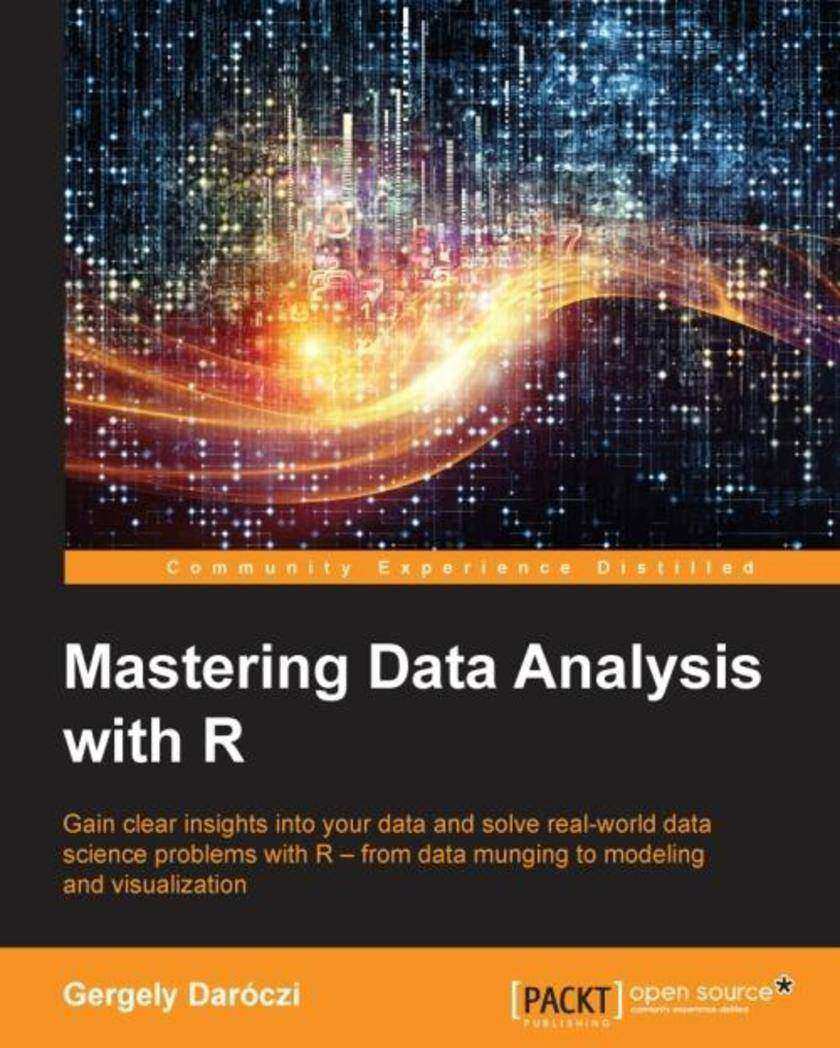
Mastering Data Analysis with R
¥99.18
Gain sharp insights into your data and solve real-world data science problems with R—from data munging to modeling and visualization About This Book Handle your data with precision and care for optimal business intelligence Restructure and transform your data to inform decision-making Packed with practical advice and tips to help you get to grips with data mining Who This Book Is For If you are a data scientist or R developer who wants to explore and optimize your use of R’s advanced features and tools, this is the book for you. A basic knowledge of R is required, along with an understanding of database logic. What You Will Learn Connect to and load data from R’s range of powerful databases Successfully fetch and parse structured and unstructured data Transform and restructure your data with efficient R packages Define and build complex statistical models with glm Develop and train machine learning algorithms Visualize social networks and graph data Deploy supervised and unsupervised classification algorithms Discover how to visualize spatial data with R In Detail R is an essential language for sharp and successful data analysis. Its numerous features and ease of use make it a powerful way of mining, managing, and interpreting large sets of data. In a world where understanding big data has become key, by mastering R you will be able to deal with your data effectively and efficiently. This book will give you the guidance you need to build and develop your knowledge and expertise. Bridging the gap between theory and practice, this book will help you to understand and use data for a competitive advantage. Beginning with taking you through essential data mining and management tasks such as munging, fetching, cleaning, and restructuring, the book then explores different model designs and the core components of effective analysis. You will then discover how to optimize your use of machine learning algorithms for classification and recommendation systems beside the traditional and more recent statistical methods. Style and approach Covering the essential tasks and skills within data science, Mastering Data Analysis provides you with solutions to the challenges of data science. Each section gives you a theoretical overview before demonstrating how to put the theory to work with real-world use cases and hands-on examples.




 购物车
购物车 个人中心
个人中心



